 Built in 1799, by Maharaja Sawai Pratap Singh the 'Hawa Mahal', Palace of the Wind, is one of the major landmarks of Jaipur. It is an integral part of the City Palace, an extension of the Zenana (women's chambers) standing away from the main complex. This five storey building of unusual architecture designed by Lal Chand Usta, is a stunning example of Rajput artistry made of red and pink sand stone, beautifully outlined with white borders and motif's painted with quick lime. The monument with a spectacular view of Jaipur city with road avenues, intersections and colourful crowds in the market, was originally conceived with the aim of enabling ladies of the royal household to watch the everyday life and royal processions in the city without being seen by others.
Built in 1799, by Maharaja Sawai Pratap Singh the 'Hawa Mahal', Palace of the Wind, is one of the major landmarks of Jaipur. It is an integral part of the City Palace, an extension of the Zenana (women's chambers) standing away from the main complex. This five storey building of unusual architecture designed by Lal Chand Usta, is a stunning example of Rajput artistry made of red and pink sand stone, beautifully outlined with white borders and motif's painted with quick lime. The monument with a spectacular view of Jaipur city with road avenues, intersections and colourful crowds in the market, was originally conceived with the aim of enabling ladies of the royal household to watch the everyday life and royal processions in the city without being seen by others.
Thursday, June 27, 2013
Hawa Mahal ( Jaipur, India)
 Built in 1799, by Maharaja Sawai Pratap Singh the 'Hawa Mahal', Palace of the Wind, is one of the major landmarks of Jaipur. It is an integral part of the City Palace, an extension of the Zenana (women's chambers) standing away from the main complex. This five storey building of unusual architecture designed by Lal Chand Usta, is a stunning example of Rajput artistry made of red and pink sand stone, beautifully outlined with white borders and motif's painted with quick lime. The monument with a spectacular view of Jaipur city with road avenues, intersections and colourful crowds in the market, was originally conceived with the aim of enabling ladies of the royal household to watch the everyday life and royal processions in the city without being seen by others.
Built in 1799, by Maharaja Sawai Pratap Singh the 'Hawa Mahal', Palace of the Wind, is one of the major landmarks of Jaipur. It is an integral part of the City Palace, an extension of the Zenana (women's chambers) standing away from the main complex. This five storey building of unusual architecture designed by Lal Chand Usta, is a stunning example of Rajput artistry made of red and pink sand stone, beautifully outlined with white borders and motif's painted with quick lime. The monument with a spectacular view of Jaipur city with road avenues, intersections and colourful crowds in the market, was originally conceived with the aim of enabling ladies of the royal household to watch the everyday life and royal processions in the city without being seen by others.
India Gate
Wednesday, June 26, 2013
Qutub Minar
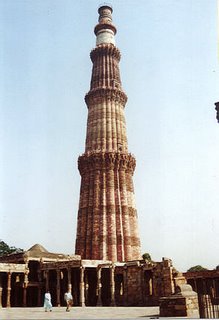
Qutub Minar was raised by Qutub-ud-Din in 1199 AD, either as a victory tower or as a minaret to the adjacent mosque. It is one of the finest Islamic structures ever raised and is Delhi's most recognised landmark. However, only the first storey was accomplished by Qutb-ud-din and the rest were built by his successor and son-in-law, IItumish (1211-36 AD). The two circular stories in white marble were built by Firozshah Tughlaq in 1368, who used marble to face the redstone. Qutub Minar is a red sandstone tower beautified with intricate and striking carvings and is inscribed with verses from the holy Quran. Its projecting balconies with inscriptional decorative bands on different storeys heighten its decorative effect.
An earthquake in the early 19th century destroyed its crowning cupola. An English engineer, Major Robert Smith, replaced it in 1829, but his addition looked so grossly out of place that it was removed in 1848 by Governor-General Lord Hardings. It now stands on the lawns and has acquired the sobriquet Smith's Folly.
Till a while ago, the base of the Minar had a number of glass plates banded by concrete, installed by the Archaeological Survey of India to monitor earthquakes.
Nainital, India
London Canal Museum
 At the London Canal Museum you can see inside a narrowboat cabin, learn about the history of London's canals, about the cargoes carried, the people who lived and worked on the waterways, and the horses that pulled their boats. Peer down into the unique heritage of a huge Victorian ice well used to store ice imported from Norway and brought by ship and canal boat to be stored. The museum is an attraction housed in a former ice warehouse built in about 1862-3 for Carlo Gatti, the famous ice cream maker, and features the history of the ice trade and ice cream as well as the canals. This is the only London museum of inland waterways and is situated at King's Cross, an accessible central London location.
At the London Canal Museum you can see inside a narrowboat cabin, learn about the history of London's canals, about the cargoes carried, the people who lived and worked on the waterways, and the horses that pulled their boats. Peer down into the unique heritage of a huge Victorian ice well used to store ice imported from Norway and brought by ship and canal boat to be stored. The museum is an attraction housed in a former ice warehouse built in about 1862-3 for Carlo Gatti, the famous ice cream maker, and features the history of the ice trade and ice cream as well as the canals. This is the only London museum of inland waterways and is situated at King's Cross, an accessible central London location.
Tuesday, June 25, 2013
Easter Island
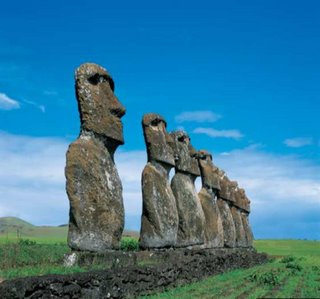 It is one of the most isolated islands in the world but 1200 years ago a double-hulled canoe filled with seafarers from a distant culture landed upon its shores. Over the centuries that followed a remarkable society developed in isolation on the island. For reasons still unknown they began carving giant statues out of volcanic rock. These monuments, known, as "moai" are some of the most incredible ancient relics ever discovered. The people of Easter Island called themselves the Rapa Nui. Where did they come from and why did they disappear? Science has learned much about the enigma of Easter Island and has put to rest some of the more bizarre theories, but questions and controversies remain. Explore this site to get the latest information on the island's history and current research.
It is one of the most isolated islands in the world but 1200 years ago a double-hulled canoe filled with seafarers from a distant culture landed upon its shores. Over the centuries that followed a remarkable society developed in isolation on the island. For reasons still unknown they began carving giant statues out of volcanic rock. These monuments, known, as "moai" are some of the most incredible ancient relics ever discovered. The people of Easter Island called themselves the Rapa Nui. Where did they come from and why did they disappear? Science has learned much about the enigma of Easter Island and has put to rest some of the more bizarre theories, but questions and controversies remain. Explore this site to get the latest information on the island's history and current research.
The Golden Temple

The Golden Temple is the ultimate Sikh pilgrimage. The Harmandir Sahib, as it is traditionally known, actually means the temple of Hari or the Supreme God. Also known as the Darbar Sahib, the stupendous, architectural phenomena is located at the city of Amritsar (INDIA). The temple's exterior is gold-plated and the structure stands in the middle of a square tank. There is a causeway across the Pool of Nectar to reach the Temple. The shrine is symbolical of the doctrines of Sikhism. It also represents the magnificent strength of all the Sikhs. The amazing thing about Harmandir Sahib is that it has doorways on all four sides, meant to be open for the people of the all four castes. All over the, the Sikhs always look forward to visit to the magnificent temple and offer prayers at the Harmandir Sahib.
Gateway of India

The Gateway of India is a monument located in Mumbai, India. Located on the waterfront in South Mumbai, the Gateway is a basalt arch 26 metres high. The Gateway is traditionally the first thing visitors arriving by boat would see of Bombay. Behind the Gateway steps lead down to the waterfront, where boat trips can be had to locations such as Elephanta Island. The Taj Mahal Hotel adjacent is also a major landmark, and the site is a popular tourist destination.
The Gateway is built from yellow kharodi basalt and reinforced concrete. While Indo-Saracenic in architectural style, elements are derived from the Muslim architectural styles of 16th century Gujarat. The central dome is 15 metres in diameter and 26 metres above ground at its highest point. The whole harbour front was realigned in order to come in line with a planned esplanade which would sweep down to the centre of the town. The cost of the construction was Rs. 21 lakhs, borne mainly by the Government of India. For lack of funds, the approach road was never built, and so the Gateway stands at an angle to the road leading up to it.
Monday, June 24, 2013
Grand Canyons

Grand Canyon is unmatched throughout the world for the vistas it offers to visitors on the rim. It is not the deepest canyon in the world. Both the Barranca del Cobre in northern Mexico and Hell's Canyon in Idaho are deeper. But Grand Canyon is known for its overwhelming size and its intricate and colorful landscape. Geologically it is significant because of the thick sequence of ancient rocks that are beautifully preserved and exposed in the walls of the canyon. These rock layers record much of the early geologic history of the North American continent. Grand Canyon is also one of the most spectacular examples of erosion in the world.
Jim Corbett National Park India
 Jim Corbett National Park India had the proud distinction of being chosen as the venue for the inauguration of Project Tiger in India; earlier part of Uttar Pradesh now comes under Uttaranchal, the newly found state. Jim Corbett National Park India is home to a variety of flora and fauna, Corbett park is famous for its wild population of Tigers, Leopards and Elephants. Corbett Tiger Reserve has a great variety of fauna on account of habitat diversity. In the Jim Corbett National Park are found 110 tree species, 50 mammals' species, 580 bird species and 25 reptile species.
Jim Corbett National Park India had the proud distinction of being chosen as the venue for the inauguration of Project Tiger in India; earlier part of Uttar Pradesh now comes under Uttaranchal, the newly found state. Jim Corbett National Park India is home to a variety of flora and fauna, Corbett park is famous for its wild population of Tigers, Leopards and Elephants. Corbett Tiger Reserve has a great variety of fauna on account of habitat diversity. In the Jim Corbett National Park are found 110 tree species, 50 mammals' species, 580 bird species and 25 reptile species.Jim Corbett National Park India has always been famous for their resident tigers. Initially Jim Corbett National Park reserve was named as 'Hailey National Park' in 193
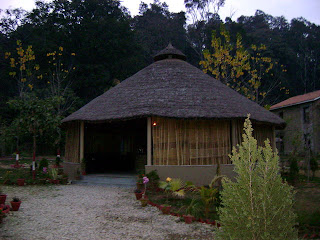 6. Jim Corbett National Park was renamed in 1954-55 as 'Ramganga National Park' and again in 1955-56 as 'Jim Corbett National Park' after Jim Corbett who hunted down tigers that had turned man-eaters, between 1907 to 1939. Jim Corbett National Park India is the 1st and oldest National Park of India. Jim Corbett National Park India was one of the nine Tiger Reserves created at the launch of the Project Tiger in 1973.
6. Jim Corbett National Park was renamed in 1954-55 as 'Ramganga National Park' and again in 1955-56 as 'Jim Corbett National Park' after Jim Corbett who hunted down tigers that had turned man-eaters, between 1907 to 1939. Jim Corbett National Park India is the 1st and oldest National Park of India. Jim Corbett National Park India was one of the nine Tiger Reserves created at the launch of the Project Tiger in 1973.Jim Corbett National Park India is a haven for Tigers as well as its prey, which include four kinds of Deer, Wild Boar and some lesser-known animals. Leopards are mostly found in the hilly areas of the Corbett park. Some nocturnal cats found here are the Leopard Cat, Jungle Cat and Fishing Cat. Sloth Bear is found in the lower regions of the park while the Himalayan Black Bear is seen in the higher hills only. The Dole or Wild Dog, though they can be seen in the southern areas of the park along with the Jackal. Some of the smaller residents of the park are Himalayan Palm Civet, Indian Gray Mongoose,  Common Otter, Blacknaped Hare and Porcupine. Elephants are among one of the main attractions of Jim Corbett Park. Along the Ramganga River shores, one can spot the long-snouted, fish-eating Gharial Crocodile and the 'Mugger' Crocodile. Also seen on the rocky hillsides is the Ghoral or Goat Antelopes. The Langur and Rhesus Monkeys are well distributed through out the jim corbett national park and warning the whole Jungle with alarm calls when they see either a Tiger or Leopard from tree-top perches.
Common Otter, Blacknaped Hare and Porcupine. Elephants are among one of the main attractions of Jim Corbett Park. Along the Ramganga River shores, one can spot the long-snouted, fish-eating Gharial Crocodile and the 'Mugger' Crocodile. Also seen on the rocky hillsides is the Ghoral or Goat Antelopes. The Langur and Rhesus Monkeys are well distributed through out the jim corbett national park and warning the whole Jungle with alarm calls when they see either a Tiger or Leopard from tree-top perches.
 Common Otter, Blacknaped Hare and Porcupine. Elephants are among one of the main attractions of Jim Corbett Park. Along the Ramganga River shores, one can spot the long-snouted, fish-eating Gharial Crocodile and the 'Mugger' Crocodile. Also seen on the rocky hillsides is the Ghoral or Goat Antelopes. The Langur and Rhesus Monkeys are well distributed through out the jim corbett national park and warning the whole Jungle with alarm calls when they see either a Tiger or Leopard from tree-top perches.
Common Otter, Blacknaped Hare and Porcupine. Elephants are among one of the main attractions of Jim Corbett Park. Along the Ramganga River shores, one can spot the long-snouted, fish-eating Gharial Crocodile and the 'Mugger' Crocodile. Also seen on the rocky hillsides is the Ghoral or Goat Antelopes. The Langur and Rhesus Monkeys are well distributed through out the jim corbett national park and warning the whole Jungle with alarm calls when they see either a Tiger or Leopard from tree-top perches.Hotels in Jim Corbett National Park can divided in four category: Resorts, Hotels and Fore
 st Rest Houses, providing a higher standard of accommodation at a price as well as guides for expeditions in the forests, which can be as rich in wildlife as the Jim Corbett National Park, without the restrictions.
st Rest Houses, providing a higher standard of accommodation at a price as well as guides for expeditions in the forests, which can be as rich in wildlife as the Jim Corbett National Park, without the restrictions.There are many accommodation facilities at Ramnagar as well as at the Corbett National Park. Being one of the most frequently visited parks in the country, the forest department and other agencies have their hotels, lodges, rest houses, log huts for the visitors.
Forest rest houses, log huts etc at Dhikala, forest rest houses at Sarapduli, Bijrani, and Ghairal offer some of the best stay in the region. There are many resorts along the periphery of the park which take the load off the governments accommodation facilities. To stay at the government hotels, rest houses etc make sure that reservations are done well in advance as the pressure is really high during the tourist seasons.
In order to make the travel tour to Corbett even more joyful we at Corbett P
 ark offer just the right kind of accommodation for you and your family or friends in Corbett. We at Corbett Park can customize the tour package and offer the corbett jungle resort and hotel accommodation. As Corbett is quite popular destination during the tourist season, it is better to get reservation before reaching there.
ark offer just the right kind of accommodation for you and your family or friends in Corbett. We at Corbett Park can customize the tour package and offer the corbett jungle resort and hotel accommodation. As Corbett is quite popular destination during the tourist season, it is better to get reservation before reaching there.The park normally opens at 0600 hrs in the morning and is open till about 1100 hrs in the morning. In the afternoon the park timings usually are from 1430 to 1730. However depending on the season the timings change locally which the forest authorities of Corbett notify.
Cape Town
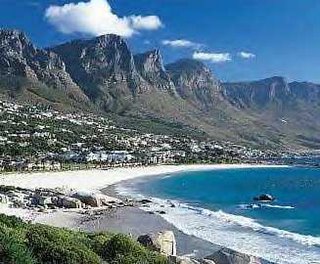
Cape Town is one of the few large cities where the periphery is cosmopolitan and developed and the center of the city is actual wilderness. It's an interesting and beautiful variation on the usual city experience, due to the fact that Cape Town nestles up against Table Mountain (3563 ft. high), a wildlife preserve directly in the middle of town.
Cape Town has a Mediterranean climate with an average temperature range of 7-27 degrees Celsius. Generally the winter months are between April and August with summer being from September to March. Summers are warm and dry and winters cool and wet.
Cape Town is two hours ahead of Greenwich Mean Time.
Spectacular tourism attractions like beaches, the famous Kirstenbosch botanical gardens and rugged Table Mountain are minutes away from the city centre.
If you love nature, Cape Town has remarkable natural areas with brilliant hiking, birdwatching, whale watching, and all sorts of other nature-related activities and tourism attractions.
There are excellent sports facilities including many great golf courses, gyms, tennis courts, indoor and outdoor pools. Watersports enthusiasts can surf, swim, dive, waterski, watersurf, kayak or paddleski at one of the many beaches.
If you enjoy adrenaline rushes, Cape Town is a mecca for adventure activities from mountain biking to shark-diving and hang-gliding.
If you prefer more relaxed activities than you will appreciate the cultural side of Cape Town's tourism attractions. Superb museums, a planetarium, and the country's best art galleries are situated in the town. Township tours and street performers will introduce you to the "people's culture".
The city's cultural diversity is reflected in everything from the craft items and clothing to the restaurants, nightlife and tourism attractions.
The nightlife is the most happening in Africa, with clubs and pubs to suit all tastes. You can dance to any sort of music, even "kwaito", which is a funky township music related to reggae.
For other fun seekers, Cape Town offers a huge new theme park with roller coasters and water rides. Alternatively you can gamble the night away at Cape Town's casino.
Sunday, June 23, 2013
Wild Wadi Water Park

The Wild Wadi Water Park is situated in Jumeirah, an area in Dubai.
Wild Wadi is an outdoor water park with heated wave pool, water slides and artificial surfing machines. The water park also has a 18 metre high water fall, which every hour on the hour spills its load onto the guests below. The water park also has its two shops and three restaurants. The park also includes the largest water slide outside of North America.
Anne Frank House

Anne Frank was one of the Jewish victims of Nazi persecution during the second world war. After Nazi Germany invaded the Netherlands in 1940, increasingly severe anti-Jewish measures began here as well. The Frank family tried to escape by going into hiding. On July 1942, Otto Frank, Edith Frank-Hollander and their daughters Margot and Anne hid in this building on the Prinsengracht. They where later joined by Mr. and Mrs Daan, their sun Peter and Mr. Dussel. The building consists of two parts : a front house and a back annex. Otto Frank's business was located in the front house. The uppermost floors of the back anexe became the hiding place. After more than two years the group was betrayed and deported. Anne and Margot died of typhus in Bergen-Belsen in March 1945, only a few weeks before this concentration camp was liberated. Otto Frank, the only member of the group to survive, returned after the war.
During the hiding period Anne Frank kept a diary. In it she described daily life in the back anexe, the isolation and the fear of discovery. Anne's diary survived the war: after the betrayal it was found by Miep Gies, one of the helpers. When it was confirmed that Anne would not be returning, Miep gave the manuscripts to Otto Frank. In 1947 the first Dutch edition appeared. Since then the diary has been published in more then 55 languages.
The Cradle of Humankind, Gauteng, South Africa
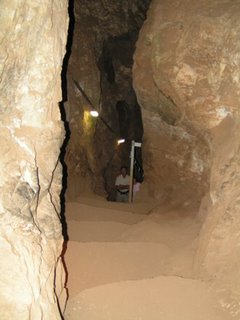
The Cradle of Humankind, Gauteng(Only 45 minutes from Johannesburg), South Africa: The Cradle of Humankind Site comprises a strip of a dozen dolomitic limestone caves containing the fossillised remains of ancient forms of animals, plants and most importantly, hominids. The dolomite in which the caves formed, started out as coral reefs growing in a worm shallow sea about 2.3 billion years ago.
At a depth of 40 metres is a perfectly calm underground lake. Local African tribes regard it with awe, believing that the water has medicinal properties and can even cure blindness.
Tribespeople hold ceremonies at the edge of the lake, during which water is carried away for treatment of the sick.
The underground lake with crystal clear water is the only one of its kind in the country.
Saturday, June 22, 2013
Darjeeling: A cool place to visit this year
 Darjeeling owes' its grandeur to its natural beauty, its clean fresh mountain air and above all, the smiling resilient people for whom it is a home. Known for its natural splendor, Darjeeling's best gift to its' visitors is the dawn of a new day. The mountains awaken first with a tentative peeking of the sun. A steep ride, five kilometers from Ghoom, or an invigorating walk up a steep incline, leads sun worshippers to Tiger Hill. The air is chilly with darkness and damp.
Darjeeling owes' its grandeur to its natural beauty, its clean fresh mountain air and above all, the smiling resilient people for whom it is a home. Known for its natural splendor, Darjeeling's best gift to its' visitors is the dawn of a new day. The mountains awaken first with a tentative peeking of the sun. A steep ride, five kilometers from Ghoom, or an invigorating walk up a steep incline, leads sun worshippers to Tiger Hill. The air is chilly with darkness and damp.Darjeeling offers all that is precious in nature-the hush of the hills, the green depth of the forest and the majesty of the mountains. It is a tradition while visiting Darjeeling to go to the Tiger Hill before daybreak to see the first rays of the sun strike the mountains. Another tradition is to spend a few hours everyday taking in the air at the Observatory
Hill, the popular meeting place for tourists as well as residents. The Himalayan Mountaineering Institute is a paradise for trekkers. You can, if you wish, go on short or long treks, depending on your stamina and enthusiasm.
For witnessing the sheer magnificence of mountains, unsullied and pristine, nothing compares with a visit to the famous hill station of Darjeeling in West Bengal. Even as you drive up the curvaceous roads or take the famous toy train to your destination, you will be awestruck by the resplendence of nature. Go through our tour offers for Darjeeling and decide which one is the best for you. If you are not looking for the one given here, call us.
Mirik Lake,Darjeeling, Darjeeling Travel, Darjeeling Hotels, Darjeeling Tours, Darjeeling Tourism, Visit Darjeeling, Darjeeling all-inclusive tours, Darjeeling travel package Darjeeling is well linked by Air, Road and Rail network. There are flights from Calcutta to Bagdogra which is 90 kilometers from Darjeeling. The nearest railhead is Siliguri. The Toy train runs from New Jalpaiguri/Siliguri. Darjeeling owes' its grandeur to its natural beauty, its clean fresh mountain air and above all, the smiling resilient people for whom it is a home. Known for its natural splendor, Darjeeling's best gift to its' visitors is the dawn of a new day. The mountains awaken
first with a tentative peeking of the sun. A steep ride, five kilometers from Ghoom, or an invigorating walk up a steep incline, leads sun worshippers to Tiger Hill. The air is chilly with darkness and damp.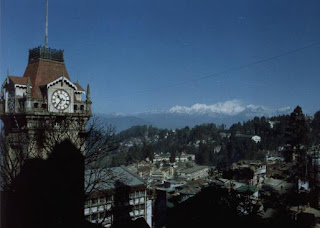

Darjeeling offers all that is precious in nature-the hush of the hills, the green depth of the forest and the majesty of the mountains. It is a tradition while visiting Darjeeling to go to the Tiger Hill before daybreak to see the first rays of the sun strike the mountains. Another tradition is to spend a few hours everyday taking in the air at the Observatory Hill, the popular meeting place for tourists as well as residents. The Himalayan Mountaineering Institute is a paradise for trekkers. You can, if you wish, go on short or long treks, depending on your stamina and enthusiasm.
For witnessing the sheer magnificence of mountains, unsullied and pristine, nothing compares with a visit to the famous hill station of Darjeeling in West Bengal. Even as you drive up the curvaceous roads or take the famous toy train to your destination, you will be awestruck by the resplendence of nature. Go through our tour offers for Darjeeling and decide which one is the best for you.
Darjeeling is well linked by Air, Road and Rail network. There are flights from Calcutta to Bagdogra which is 90 kilometers from Darjeeling. The nearest railhead is Siliguri. The Toy train runs from New Jalpaiguri/Siliguri.
Melbourne Zoo

Opened in 1862, Melbourne Zoo is the oldest in Australia. More than 350 animal species from around the world are on display in the zoo’s attractive enclosures and botanical settings.
Visitors can wander through an African and Asian rainforest displaying gorillas, pygmy hippopotamus, mandrills, tigers and otters, or see an extensive collection of Australian animals including koalas, kangaroos, wombats and platypus. Other highlights include the steamy Butterfly House (where hundreds of Australian butterflies alight upon visitors), the Wonderful New World of Bugs, the Trail of the Elephants and regular meet-the-keeper opportunities throughout the day.
During the summer months, the zoo stays open until 9.30pm for ‘Zoo Twilights’, when live music, concerts, meals and longer animal displays take place.
Guided tours are available daily between 10am and 3pm, and are operated by Friends of the Zoo volunteer guides, who are extensively trained and qualified to answer your questions. Bookings are required for large groups.
Canada's National Tower
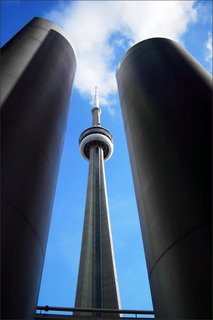
Canada's National Tower is the tallest tower and free-standing structure in the world, at 553.33 metres (1,815.39 feet). It is located in the city of Toronto, Ontario, Canada, and is considered the signature icon of the city (Geographic coordinates: 43° 38′ 33.24″ N, 79° 23′ 13.7″ W). The CN Tower attracts over 2 million visitors annually.
Construction on the CN Tower started on February 6, 1973 by Canadian National Railway who wanted to build a large TV and radio communication platform to service the Greater Toronto Area and also to demonstrate the levels, revolving restaurant, and giftshop. Key project team members were NCK Engineering as structural engineer; John Andrews Architects; Webb, Zerafa, Menkes, Housden Architects; Foundation Building Construction and Canron (Eastern Structural Division). The project proceeded 24 hours a day, five days a week for 40 months with 1,537 workers involved in the project, finally opening to the public on June 26, 1976. The structure's microwave receivers for distant signals are housed at 338 metres, and the top of the transmission antenna is at the apex of the tower. The construction costs of approximately $300 million CAD (today's equivalent) were repaid in fifteen years.
A metal staircase with 1,776 steps reaches the Sky Pod level (447 m; 147 stories) and is the tallest metal staircase on earth. These stairs are intended for emergency use and are not open to the public, except for twice a year for charity stairclimb events: around Earth Day in the spring by the World Wildlife Fund; and in the fall by the United Way's Toronto chapter. The average climber takes approximately 30 minutes to climb to the base of the radome (the white ring around the bottom of the main pod), but the fastest climb on record is 7 minutes 52 seconds.
Friday, June 21, 2013
Petronas Twin Towers

Each of the twin Petronas Towers is 88 stories plus an additional architectural point (at 1242 feet), plus a tall spire to 1483 feet. Compare to the Sears Tower in Chicago which is 110 stories, and the twin World Trade Center towers in New York, which were each 110 stories. Although these other skyscrapers were created with higher occupied floors, they are not considered as tall under the arcane rules used for rating the world's tallest, according to which architectural spires count towards building height, but antennas atop a building do not.
The Great Wall of China

The Great Wall stretches for 4,160 miles across North China. It is the only man-made structure that can be seen from the moon with the naked eye. Its construction started as far back as the Spring and Autumn period (770-476 B.c.) and the Warring States period (475-221 B.C.). Rival feudal kingdoms built walls around their territories to keep out invading nomadic tribes from the north. When Qin Shihuang unified China, he started to link up and extend these walls. Prisoners of war, convicts, soldiers, civilians and farmers provided the labor. Millions died for this cause and many Chinese stories speak of parted lovers and men dying of starvation and disease. Their bodies were buried in the foundations of the wall or used to make up its thickness. The Great Wall crosses loess plateaus, mountains, deserts, rivers and valleys, passing through five provinces and two autonomous regions. It is about 20 feet wide and 26 feet high. Parts of the wall are so broad that 10 soldiers can walk abreast. Materials used were whatever could be found near by-clay, stone, willow branches, reeds and sand. Parts of this wall can still be seen in remote parts of China. What most visitors see of the Wall now was restored in the Ming dynasty, when stone slabs replaced clay bricks. It took 100 years to rebuild and it is said that the amount of material used in the present wall alone is enough to circle the world at the equator five times.
The Tower of Pisa

The Tower of Pisa is the bell tower of the Cathedral. Its construction began in the august of 1173 and continued (with two long interruptions) for about two hundred years, in full fidelity to the original project, whose architect is still uncertain.
In the past it was widely believed that the inclination of the Tower was part of the project ever since its beginning, but now we know that it is not so. The Tower was designed to be "vertical" (and even if it did not lean it would still be one of the most remarkable bell towers in Europe), and started to incline during its construction.
Both because of its inclination, and its beauty, from 1173 up to the present the Tower has been the object of very special attention. During its construction efforts were made to halt the incipient inclination through the use of special construction devices; later colums and other damaged parts were substituted in more than one occasion; today, interventions are being carried out within the sub-soil in order to significantly reduce the inclination and to make sure that Tower will have a long life.
In all this story it is possible to find a meaningful constant, the "genetic code" of the Tower: its continual interaction with the soil on which it was built. Today's (1999) works for the safeguard and the conservation of the Tower with very advanced methodologies are designed to fully respect this constant.
Thursday, June 20, 2013
Gua Tempurung

Malaysian caves are filled with mystery and some of nature's most beautiful sculptures. Most of the caves in the country date back to the Stone Age while some caves in Sarawak are over 60 million years old.
Some of the biggest and longest caves in the world can be found in Malaysia. Some of them are archaeological sites while others have underground rivers and beautiful stalagmite and stalactite formations.
These limestone caves are home to local fruit bats and birds; many of Malaysia’s caves remain unexplored by cavers.
Beautiful caves can also be found in Peninsula Malaysia such as Batu Caves (Kuala Lumpur), a Hindu temple that is also a prime tourist destination especially during Thaipusam; and Gua Tempurung (Perak), which is a show cave that offers visitors spelunking activities.
Wednesday, June 19, 2013
The Victoria falls

The Victoria falls is 1 708 meters wide, making it the largest curtain of water in the world. It drops between 90m and 107m into the Zambezi Gorge and an average of 550,000 cubic metres of water plummet over the edge every minute.
Remarkably preserved in its natural state, Victoria falls inspires visitors as much today as it did David Livingstone in the 1860's. The falls and the surrounding area have been declared National Parks and a World Heritage Site, thus preserving the area from excessive commercialisation. The Falls are spectacular throughout the year, but February onwards, after the rain season, has the heaviest flow and volume of spray.
The Victoria Falls constitutes one of the most spectacular natural wonders of the world. The Local people call it "Mosi-oa-Tunya" -- the smoke that thunders and the Falls are remarkable. There is a magic about them manifested in the towering column of spray when the river is high, the thunder of the falling water, the terrifying abyss and tranquil lagoons upstream in which hippo and deadly crocodiles lurk.
Melbourne Museum

The modernist Melbourne Museum is the largest museum complex in the southern hemisphere. Spread over six huge levels, half of which are below ground level, the museum draws on the latest technology to give an insight into Australia’s flora, fauna and culture.
Highlights include the Science and Life Gallery, which explores areas such as digital technology, biodiversity and geology, and how they have changed our perceptions of the natural world; Bunjilaka, a living cultural centre for the Koori community of south-eastern Australia; and the Australia Gallery, focusing on the vibrant history of Melbourne and Victoria – from Australia’s iconic racehorse Phar Lap to the kitchen set from the Neighbours TV show. Also of interest is the Evolution Gallery, which features life-size dinosaur skeletons and looks at how life changes over time, the Children’s Museum, where the brightly coloured cube-shaped ‘Big Box’ provides a fun and stimulating environment for children from three to eight years old, and ICE, Australia’s only interactive arcade-like cinema game.
One of the museum’s most striking exhibits is the Forest Gallery, a living interpretation of Victoria’s tall temperate forests, which features around 80,00 plants from more than 120 different species. It’s also home to more than 20 different vertebrate species, including snakes, birds, fish, frogs and hundreds of different insects.
Tuesday, June 18, 2013
Museum of Qin Terra Cotta Warriors and Horses

The Terra Cotta Warriors and Horses are the most significant archeological excavations of the 20th century. Work is ongoing at this site, which is around 1.5 kilometers east of Emperor Qin Shi Huang's Mausoleum, Lintong County, Shaanxi province. It is a sight not to be missed by any visitor to China.
Upon ascending the throne at the age of 13 (in 246 BC), Qin Shi Huang, later the first Emperor of all China, had work begun on his mausoleum. It took 11 years to finish. It is speculated that many buried treasures and sacrificial objects had accompanied the emperor in his after life.Chariot No. 1 exhibited in the Multi-Exhibition Hall in the Terra Cotta Army Museum A group of peasants uncovered some pottery while digging for a well nearby the royal tomb in 1974. It caught the attention of archeologists immediately. They came to Xian in droves to study and to extend the digs. They had established beyond doubt that these artifacts were associated with the Qin Dynasty (211 --206 BC).
The State Council authorized to build a museum on site in 1975. When completed, people from far and near came to visit. Xian and the Museum of Qin Terra Cotta Warriors and Horses have become landmarks on all travelers' tinerary.
Pit 3 of Qin Terra Cotta Army, supposed to be the headquarters of the garrison exercising military controlLife size terracotta figures of warriors and horses arranged in battle formations are the star features at the museum. They are replicas of what the imperial guard should look like in those days of pomp and vigor.
The museum covers an area of 16,300 square meters, divided into three sections: No. 1 Pit, No. 2 Pit, and No. 3 Pit respectively. They were tagged in the order of their discoveries. No. 1 Pit is the largest, first opened to the public on China's National Day, 1979. There are columns of soldiers at the front, followed by war chariots at the back.
Excavations of Qin Terra Cotta figuresNo. 2 Pit, found in 1976, is 20 meters northeast of No. 1 Pit. It contained over a thousand warriors and 90 chariots of wood. It was unveiled to the public in 1994.Archeologists came upon No. 3 Pit also in 1976, 25 meters northwest of No. 1 Pit. It looked like to be the command center of the armed forces. It went on display in 1989, with 68 warriors, a war chariot and four horses.
Altogether over 7,000 pottery soldiers, horses, chariots, and even weapons have been unearthed from these pits. Most of them have been restored to their former grandeur.
The Terracotta Warriors and Horses is a sensational archeological find of all times. It has put Xian on the map for tourists. It was listed by UNESCO in 1987 as one of the world cultural heritages.
Eiffel Tower (Paris)

The Eiffel Tower was built for the International Exhibition of Paris of 1889 commemorating the centenary of the French Revolution. The Prince of Wales, later King Edward VII of England, opened the tower. Of the 700 proposals submitted in a design competition, Gustave Eiffel's was unanimously chosen.
However it was not accepted by all at first, and a petition of 300 names - including those of Maupassant, Emile Zola, Charles Garnier (architect of the Opéra Garnier), and Dumas the Younger - protested its construction.
At 300 metres (320.75m including antenna), and 7000 tons, it was the world's tallest building until 1930. Other statistics include:
2.5 million rivets, 300 steel workers, and 2 years (1887-1889) to construct it. Sway of at most 12 cm in high winds. Height varies up to 15 cm depending on temperature. 15,000 iron pieces (excluding rivets).
40 tons of paint. 1652 steps to the top.
It was almost torn down in 1909, but was saved because of its antenna - used for telegraphy at that time. Beginning in 1910 it became part of the International Time Service. French radio (since 1918), and French television (since 1957) have also made use of its stature.
During its lifetime, the Eiffel Tower has also witnessed a few strange scenes, including being scaled by a mountaineer in 1954, and parachuted off of in 1984 by two Englishmen. In 1923 a journalist rode a bicycle down from the first level. Some accounts say he rode down the stairs, other accounts suggest the exterior of one of the tower's four legs which slope outward.
However, if its birth was difficult, it is now completely accepted and must be listed as one of the symbols of Paris itself.
Taj Mahal

Located at the city of Agra in the State of Uttar Pradesh (India), the Taj Mahal is one of the most beautiful masterpieces of architecture in the world. Agra, situated about 200 km south of New Delhi, was the Capital of the Mughals (Moguls), the Muslim Emperors who ruled Northern India between the sixteenth and nineteenth centuries. The Mughals were the descendents of two of the most skilled warriors in history: the Turks and the Mongols. The Mughal dynasty reached its highest strength and fame during the reign of their early Emperors, Akbar, Jehangir, and Shah Jehan.
It was Shah Jehan who ordered the building of the Taj, in honor of his wife, Arjumand Banu who later became known as Mumtaz Mahal, the Distinguished of the Palace. Mumtaz and Shah Jehan were married in 1612 and, over the next 18 years, had 14 children together. The Empress used to accompany her husband in his military campaigns, and it was in 1630, in Burhanpur, that she gave birth to her last child, for she died in childbirth. So great was the Emperor love to his wife that he ordered the building of the most beautiful mausoleum on Earth for her.
Although it is not known for sure who planned the Taj, the name of an Indian architect of Persian descent, Ustad Ahmad Lahori, has been cited in many sources. As soon as construction began in 1630, masons, craftsmen, sculptors, and calligraphers were summoned from Persia, the Ottoman Empire, and Europe to work on the masterpiece. The site was chosen near the Capital, Agra on the southwest bank of the River Yamuna. The architectural complex is comprised of five main elements: the Darwaza or main gateway, the Bageecha or garden, the Masjid or mosque, the Naqqar Khana or rest house, and the Rauza or the Taj Mahal mausoleum. The actual Tomb is situated inside the Taj.
The unique mughal style combines elements of Persian, Central Asian, and Islamic architecture. Most impressive are the black and white chessboard marble floor, the four tall minarets (40 m high) at the corners of the structure, and the majestic dome in the middle. On closer look, the lettering of the Quran verses around the archways appears to be uniform, regardless of their height. The lettering spacing and density has been customized to give this impression to the beholder. Other illusionary effects have been accounted for in the geometry of the tomb and the tall minarets. The impressive pietra dura artwork includes geometric elements, plants and flowers, mostly common in Islamic architecture. The level of sophistication in artwork becomes obvious when one realizes that a 3 cm decorative element contains more than 50 inlaid gemstones.
Monday, June 17, 2013
Catalina Island ( Los Angeles )

Santa Catalina Island is part of Los Angeles County. Located 22 miles off the California mainland, the island comprises 76 square miles and boasts 52 miles of spectacular coastline. The island consists of two quaint commercial centers: Avalon, population 3,500, and Two Harbors, population 100.
Santa Catalina Island represents a refreshing and unusual contrast to the densely populated urban areas of Southern California. In order to preserve this valuable open space for public enjoyment, the Wrigley Family deeded approximately 88 percent of the island in 1957 to the nonprofit Catalina Island Conservancy. The Santa Catalina Island Company, established in1894, is the principal landowner of the remaining private land and focuses on preserving the island’s unique charm and character.
Tokyo Tower

The Tokyo Tower is 333 meters high. Since 1958 is has been the world's tallest self-supporting iron tower. The Eiffel tower is only 320 meters tall. The Tokyo tower weighs 4000 tons which is much lighter than the Eiffel tower which weighs 7000 tons. The tower is painted in white and orange to meet aviation safety regulations. The Tokyo tower broadcasts 14 signals for radio and television. The Tower has a lightning rod on the top. Visitors can take an elevator to an observatory level which provides excellent views of the city.
khufu pyramid

The largest and most famous of all the pyramids, the Great Pyramid at Giza, was built by Snefru's son, Khufu, known also as Cheops, the later Greek form of his name. The pyramid's base covered over 13 acres and its sides rose at an angle of 51 degrees 52 minutes and were over 755 feet long. It originally stood over 481 feet high; today it is 450 feet high. Scientists estimate that its stone blocks average over two tons apiece, with the largest weighing as much as fifteen tons each. Two other major pyramids were built at Giza, for Khufu's son, King Khafre (Chephren), and a successor of Khafre, Menkaure (Mycerinus). Also located at Giza is the famous Sphinx, a massive statue of a lion with a human head, carved during the time of Khafre.
Sunday, June 16, 2013
The Oresund Bridge in Copenhagen ( Denmark )
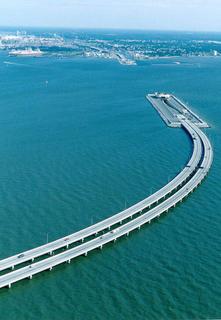
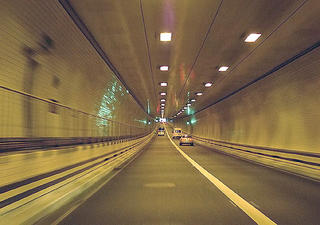
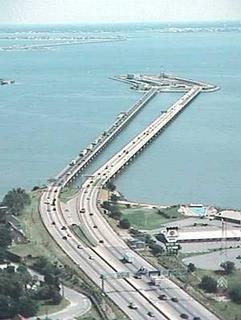
The Oresund Bridge in Copenhagen, Denmark links Denmark and Sweden for the first time since the end of the Ice Age over 7000 years ago. The $4 billion bridge/tunnel project was completed in 2000 and consists of a 5-mile bridge, 2.5 mile tunnel, and a man-made island. Malmo, Sweden, the third largest city in Sweden, is now just 35 minutes away from Copenhagen via the train across the Oresund Straits.
This bridge is half under the water, for ships to pass and then again, it comes out on the other side. Truly a marvelous piece of engineering!
Deep Sea World (SCOTLAND)

Located beneath the famous Forth Rail Bridge at North Queensferry in Fife, Deep Sea World is a vast aquarium that’s home to thousands of weird and wonderful creatures. Visitors can explore the aquatic world on the Underwater Safari via one of the longest underwater tunnels in the world as the impressive marine life – including tiger sharks and conger eels – swim overhead. There are separate zones such as the Amazonian Experience and there's also amphibian and reptile displays. Open to visitors with no previous diving experience, those that want to get closer to the fish are able to take a diving induction course ending with a swim with the ever-popular resident sharks. Deep Sea World has also recently launched its Shark Awareness course for qualified divers. The Seal Sanctuary is another popular addition which is dedicated to the rehabilitation of orphaned or injured seals. The centre also has conference facilities which are available for private hire.
Hawaiian Islands

The Hawaiian Islands are located in the middle of the Pacific Ocean approximately 2,400 miles (4.000 km) southwest of California. You can go there only by airplane or boat. There are six major islands: Oahu, Maui, The Big Island of Hawaii, Kauai, Molokai and Lanai. Each island is unique and may feature live volcanoes, lava flows, tropical rain forests, beautiful beaches, sugar cane fields, pineapple plantations or historic sites. These tropical paradises attract about 7 million tourists each year, but most visitors only see one or two of the islands.
Saturday, June 15, 2013
The Golden gate Bridge
 The Golden gate Bridge is one of the biggest and most spectacular suspension bridges in the entire world. It goes across the San Francisco Bay from California to the peninsula of San Francisco. It is a total feet of 8,981 long. Since it is so big, coming to San Francisco( from plane, car, or boat) the Golden Gate Bridge's towers are among the first structures seen. The towers stand over pedstrians in cars riding on this amazing bridge. These towers hold up two thick cables (36 1/2 cm in diameter) from which the bridge hangs. From the water to the bridge there is a 220 feet. Joseph Strauss designed this spectacular bridge.
The Golden gate Bridge is one of the biggest and most spectacular suspension bridges in the entire world. It goes across the San Francisco Bay from California to the peninsula of San Francisco. It is a total feet of 8,981 long. Since it is so big, coming to San Francisco( from plane, car, or boat) the Golden Gate Bridge's towers are among the first structures seen. The towers stand over pedstrians in cars riding on this amazing bridge. These towers hold up two thick cables (36 1/2 cm in diameter) from which the bridge hangs. From the water to the bridge there is a 220 feet. Joseph Strauss designed this spectacular bridge.
Statue of Liberty

Located in New York, at 151 feet (46 meters) tall (305 feet including base and pedestal), the Statue of Liberty symbolizes freedom throughout the world. Its formal name is Liberty Enlightening the World. The Statue was actually a gift from the people of France.
The statue, made of copper sheets with an iron framework, depicts a woman escaping the chains of tyranny, which lie at her feet. Her right hand holds aloft a burning torch that represents liberty. Her left hand holds a tablet inscribed with the date "July 4, 1776" (in Roman numerals), the day the United States declared its independence from England. She is wearing flowing robes and the seven rays of her spiked crown symbolize the seven seas and continents.
Near the Statue of Liberty in New York Harbor is Ellis Island. This island served as an immigrant station and a temporary shelter for people coming to the U.S. from other countries. Between 1892 and 1954, approximately 12 million people passed through Ellis Island seeking refuge, freedom and opportunity. The main building on Ellis Island is now a museum dedicated to the history of the Ellis Island Immigration Station.
The Panama Canal
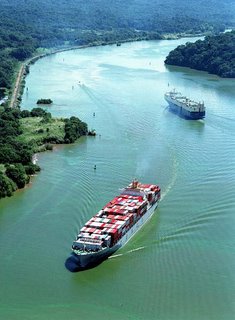
The Panama Canal bisects the continents of North and South America, cutting through the isthmus of Panama, and connecting the Atlantic and Pacific Oceans in Central America. The canal, whose building was one of the largest and most difficult engineering projects ever undertaken, has a huge impact on shipping, as it removes the need for ships to travel the long and treacherous route via the Drake Passage and Cape Horn at the southernmost tip of South America. A ship sailing from New York to San Francisco via the Panama Canal travels a distance of 5,264 miles (8,472 km), a savings of more than 7,800 miles (12,500 km) — or approximately 20 days — over the 13,100 mile (21,000 km) route around Cape Horn.
Although the concept of a canal in Panama dates back to the early 1500s, the first attempt to construct a canal began in 1880, under French leadership. The building of the 51 mile (82 km) canal was plagued by problems, including disease (particularly malaria and yellow fever), and massive landslides. The work was finally completed by the United States, and the canal opened in 1914.
The canal has been enormously successful, and continues to be a key factor in world shipping. Each year the canal accommodates the passage of over 14,000 ships, carrying over 203 million tonnes of cargo. Approximately 800,000 ships have passed through the Panama Canal since its completion
Friday, June 14, 2013
Buckingham Palace

Besides being the official London residence of The Queen, Buckingham Palace is also the busy administrative headquarters of the monarchy and has probably the most famous and easily recognisable façade of any building in the world.
The Palace is a working building and the centrepiece of Britain's constitutional monarchy. It houses the offices of those who support the day-to-day activities and duties of The Queen and The Duke of Edinburgh and their immediate family. The Palace is also the venue for great Royal ceremonies, State Visits and Investitures, all of which are organised by the Royal Household.
Although Buckingham Palace is furnished and decorated with priceless works of art that form part of the Royal collection, one of the major art collections in the world today, it is not an art gallery and nor is it a museum. Its State Rooms form the nucleus of the working Palace and are used regularly by The Queen and members of the Royal family for official and State entertaining. Buckingham Palace is one of the world's most familiar buildings and more than 50,000 people visit the Palace each year as guests to banquets, lunches, dinners, receptions and the Royal Garden Parties.
Visitors are allowed access by and organised tour to some areas of the Palace
During the summer, the Changing of the Guard takes place at the front of the Palace and is a popular event for visitors to the capital from 1st April to Early July and on alternate days at other times.
Since 1660, Household Troops have guarded the Sovereign and the Royal Palaces. The Queen's Guard usually consists of Foot Guards in full-dress uniform of red tunics and bearskins.
The Changing of the Guard takes place in the forecourt of Buckingham Palace at 11.30 every day in summer, every other day in winter, and lasts about 45 minutes. The New Guard marches to the Palace from Wellington Barracks with a Guards band, the Old Guard hands over in a ceremony during which the sentries are changed and then returns to barracks. The New Guard then marches to St James's Palace leaving the detachment at Buckingham Palace.
Niagara Falls

In all its majesty, Niagara cannot be fully enjoyed in a day. Winding miles of beautifully kept parkland culminate in the world famous waterfalls at the heart of Niagara. Whether you choose to experience the awe-inspiring view of our cascading water attraction by day or night, winter or summer, you will appreciate the reason that millions of people from all over the world visit Niagara.
Lotus Temple ( New Delhi : India)

Located in Kalkaji in the south of Delhi (India), it is lotus shaped and has rightly been given the name. It is made of marble, cement, dolomite and sand. It is open to all faiths and is an ideal place for meditation and obtaining peace and tranquility.
Fariborz Sahba, Canadian architect of Iranian origin, spent 10 years in designing and project management, and with the help of a team of about 800 engineers, technicians, artisans and workers brought to realization one of the most complicated constructions in the world. The structure of the House is composed of three ranks of nine petals; each springing from a podium elevating the building above the surrounding plain. The first two ranks curve inward, embracing the inner dome; the third layer curves outward to form canopies over the nine entrances. The petals, constructed of reinforced white concrete cast in place, are clad in white marble panels, performed to surface profiles and patterns related to the geometry. Nine arches that provide the main support for the superstructure ring the central hall. Nine reflecting pools surround the building on the outside, their form suggesting the green leaves of the lotus flower. Translating the geometry of the design, in which there are virtually no straight lines, into the actual structure presented particular challenges in designing and erecting the framework.
Not only was it difficult to align, so as to produce accurately the complex double-curved surfaces and their intersections, but also the closeness of the petals severely restricted workspace. Nevertheless the task was carried out entirely by the local laborers. Thanks to each one who contributed in its construction. To avoid construction joints, petals were concreted in a continuous operation for approximately 48 hours. Concrete was carried up the staging by women bearing 50-pound loads in baskets balanced on their heads. All the steel reinforcing for the shells of the lotus petals was galvanized to avoid rust stains on the white concrete in the prevailing humid conditions, guaranteeing the life of the delicate shell structure of 6 to 18 cm thick shells of the petals. India is well endowed with human resources.
Thursday, June 13, 2013
Shimla
Shimla abounds in natural bounty and looks picture perfect. The small hill station amidst the lofty snow-clad Himalayan ranges, surrounded by lakes and lush green pastures look as though an artist has painted them. The unique thing about Shimla is that it still retains its colonial charm and this creates an ambience that is not found anywhere else in India. Shimla is one tourist destination that can be visited any time during the year. Summers are warm with cool and pleasant evenings while winters are bone chilling and the temperatures can fall below zero. But this
Subscribe to:
Comments (Atom)
